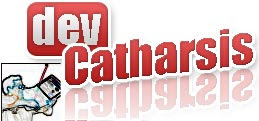Water, salt and sand are not the friends your reflex can get. Though I often take the camera with me to the beach, I ended up taking pictures from the beach, not from the water. Like the next one:

Even a shot like this can be hazardous for your camera. A while after this shot, a wave bigger than I expected got me while lying on the sand and the camera nearly took a dip.
Every now and then I jumped into the water, but only on low tide with calm waters, like this:

A hard case costs more than my camera, so I decided to get a cheaper bag case. The case choice itself wasn’t simple, as we can buy a cheap underwater camera for about the same price, but the performance and flexibility of an SLR is something I wasn’t willing to give up.
I chose Aquapac Waterproof SLR case (code 455), a 80£ (92.5€) bag. I wanted to buy an ewa-marine big enough to carry a flash, but it costs over 250€.
Aquapac didn’t guarantee that if could be fitted on either my Canon 10D and 50D, but I still ordered to check. Naturally I’m trying it on my old 10D, with an old Canon 28-105 USM, a lens I seldom use. And it fits. Not that it is easy to slip it in, you have to get the hand of it, but it fits. Here it is:

The operation is, well, clumsy. As expected. But I can still (slowly) use all of the buttons. I can even use the lens zoom.
I haven’t yet used it under water – well, to be honest I’ve dipped it underwater and took a shot, but the water was so rough that I couldn’t see anything. I have to try it out on a pool :)
Here are some shots above water:



And there is it, I can now get my camera to the beach, to the river, to canoeing, to sailing, and so on.
 Let me finish with two important advises:
Let me finish with two important advises:
- avoid contact with sunscreens: I wasn’t careful and here’s a shot of what happened
- be sure to carry a bottle of water and some cleaning cloth – salty water is definitely not a good filter for your shots








